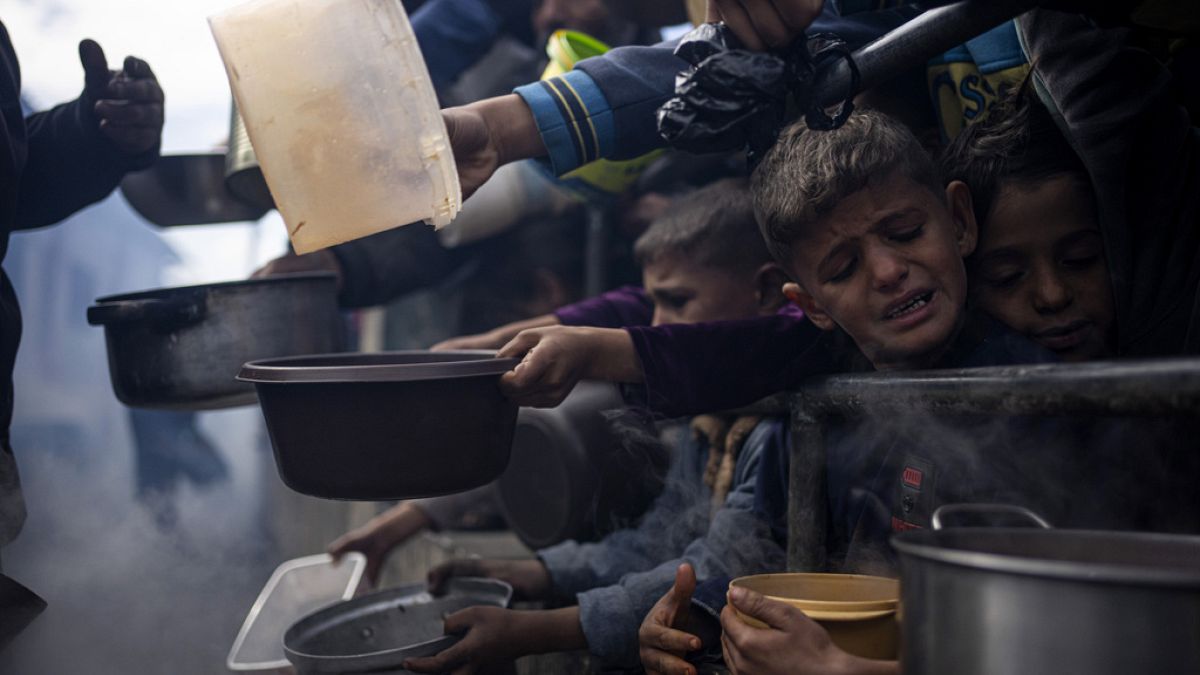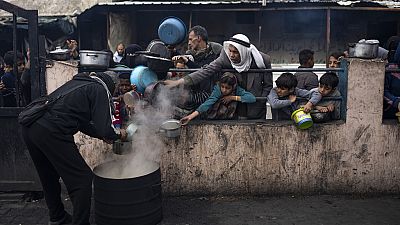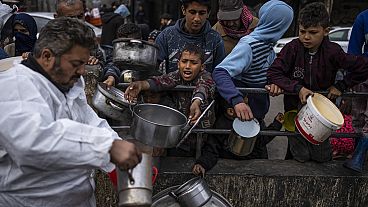UN Secretary-General Antonio Guterres said the report is “a roll call of human failings,” and that “in a world of plenty, children are starving to death".
More than 281 million people in 59 countries experienced high levels of food insecurity, requiring urgent assistance, according to a UN report.
The Global Report on Food Crises released on Wednesday found that war-torn Gaza was the territory with the largest number of people facing famine.
There were 24 million more people facing an acute lack of food than in 2022, the report said.
This was due to the sharp deterioration in food security, especially in the Gaza Strip and Sudan.
Máximo Torero, chief economist for the UN's Food and Agriculture Organization, said 705,000 people in five countries are at the highest level on a scale of hunger determined by international experts.
This was the highest number since the global report began in 2016 and quadruple the number that year.
Over 80 per cent of those facing imminent famine were in Gaza, Torero said.
South Sudan, Burkina Faso, Somalia and Mali each host many thousands also facing catastrophic hunger.
'Roll call of human failings'
According to the report’s future outlook, around 1.1 million people in Gaza, where the Israel-Hamas war is now in its seventh month, and 79,000 in South Sudan are projected to be facing famine by July.
It said conflict will also continue to drive food insecurity in Haiti, where gangs control large portions of the capital.
Additionally, while the El Nino phenomenon peaked in early 2024, “its full impact on food security - including flooding and poor rain in parts of east Africa and drought in southern Africa, especially Malawi, Zambia and Zimbabwe - are like to manifest throughout the year".
UN Secretary-General Antonio Guterres said the report is “a roll call of human failings,” and that “in a world of plenty, children are starving to death".
“The conflicts erupting over the past 12 months compound a dire global situation,” he wrote in the report's foreword.
Conflicts with 'atrocious impacts on hunger and nutrition'
Guterres highlighted the conflict in the Gaza Strip, as the enclave holds the highest number of people facing catastrophic hunger.
There is also the year-old conflict in Sudan, which has created the world's largest internal displacement crisis “with atrocious impacts on hunger and nutrition,” he added.
According to the report, over 36 million people in 39 countries and territories are facing an acute hunger emergency, a step below the famine level in Phase 4, with more than a third in Sudan and Afghanistan. It's an increase of a million people from 2022, the report said.
"The global food crisis requires an urgent global response. We must transform food systems. And the data in this report plays a vital role. So does finance," said Guterres in a statement.
Arif Husain, the UN World Food Programme’s chief economist, said every year since 2016 the numbers of people acutely food insecure have gone up, and they are now more than double the numbers before the COVID-19 pandemic.
While the report looks at 59 countries, he said the target is to get data from 73 countries where there are people who are acutely food insecure.
“We must have the funding, and we also must have the access,” Husain said, stressing that both “go hand-in-hand” and are essential to tackle acute food insecurity.
The report is the flagship publication of the Food Security Information Network and is based on a collaboration of 16 partners including UN agencies, regional and multinational bodies, the European Union, the US Agency for International Development, technical organisations and others.



